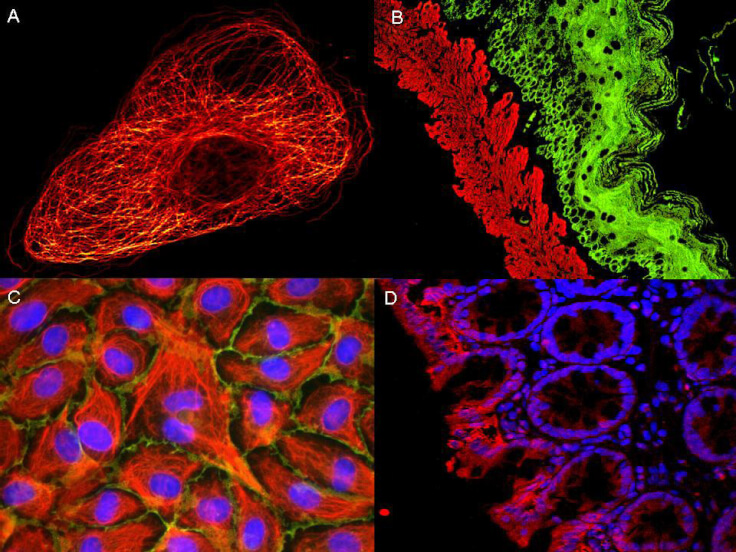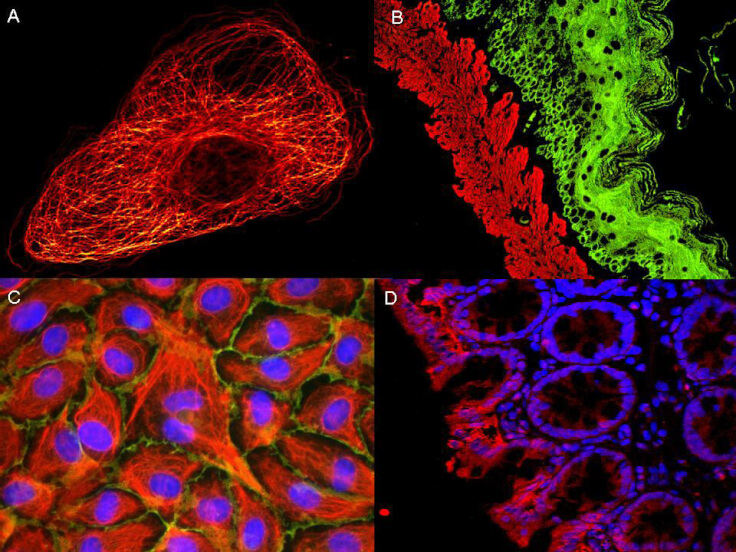Monkey IgA (Secretory component) goat polyclonal antibody, HRP
| Applications | Tested in immunoelectrophoresis and double radial immunodiffusion against a panel of appropriate secretions and purified immunoglobulin isotypes. In enzyme-immunocytochemical and immunohistochemical staining of free or bound secretory component at the cellular and subcellular level. In non-isotopic assay methodology (e.g. ELISA, Western blotting) in monkey milk or other secretions. This immunoconjugate is not pre-diluted. The optimum working dilution of each conjugate should be established by titration before being used. Excess labelled antibody must be avoided because it may cause high unspecific background staining and interfere with the specific signal. Recommended Working dilutions: Histochemical and cytochemical 1/150 - 1/500. ELISA and comparable non-precipitating antibody-binding assays 1/200 -1/4000. |
| Reactivities | Chimpanzee, Monkey |
| Conjugation | HRP |


 United States
United States
 Germany
Germany
 Japan
Japan
 United Kingdom
United Kingdom
 China
China





